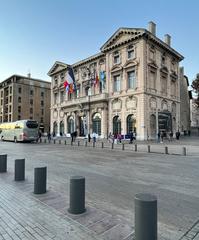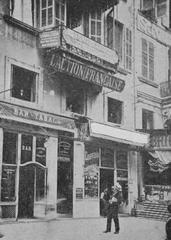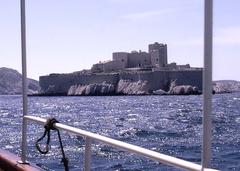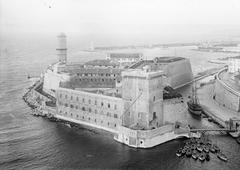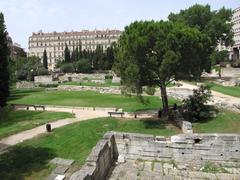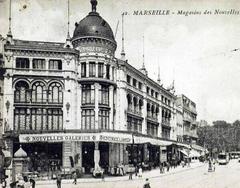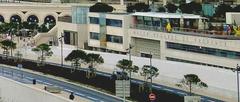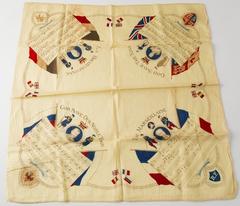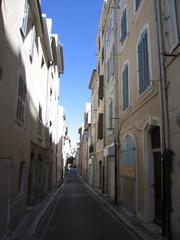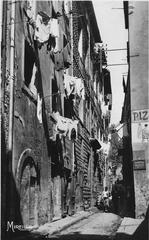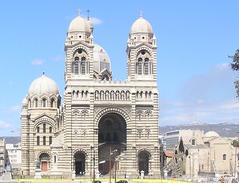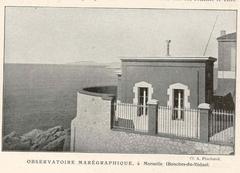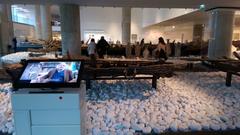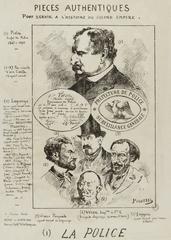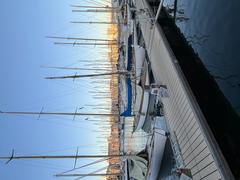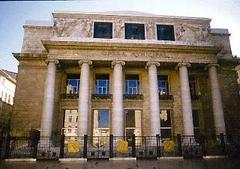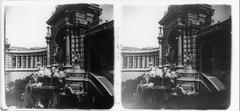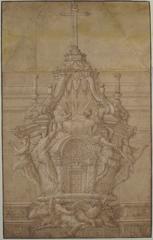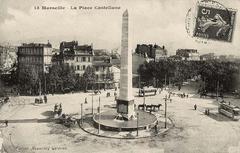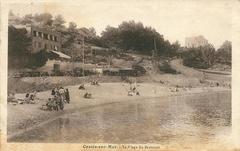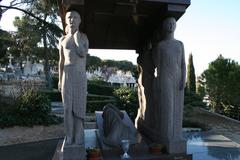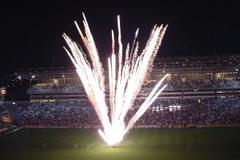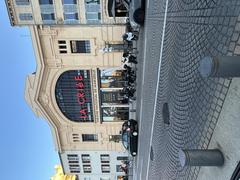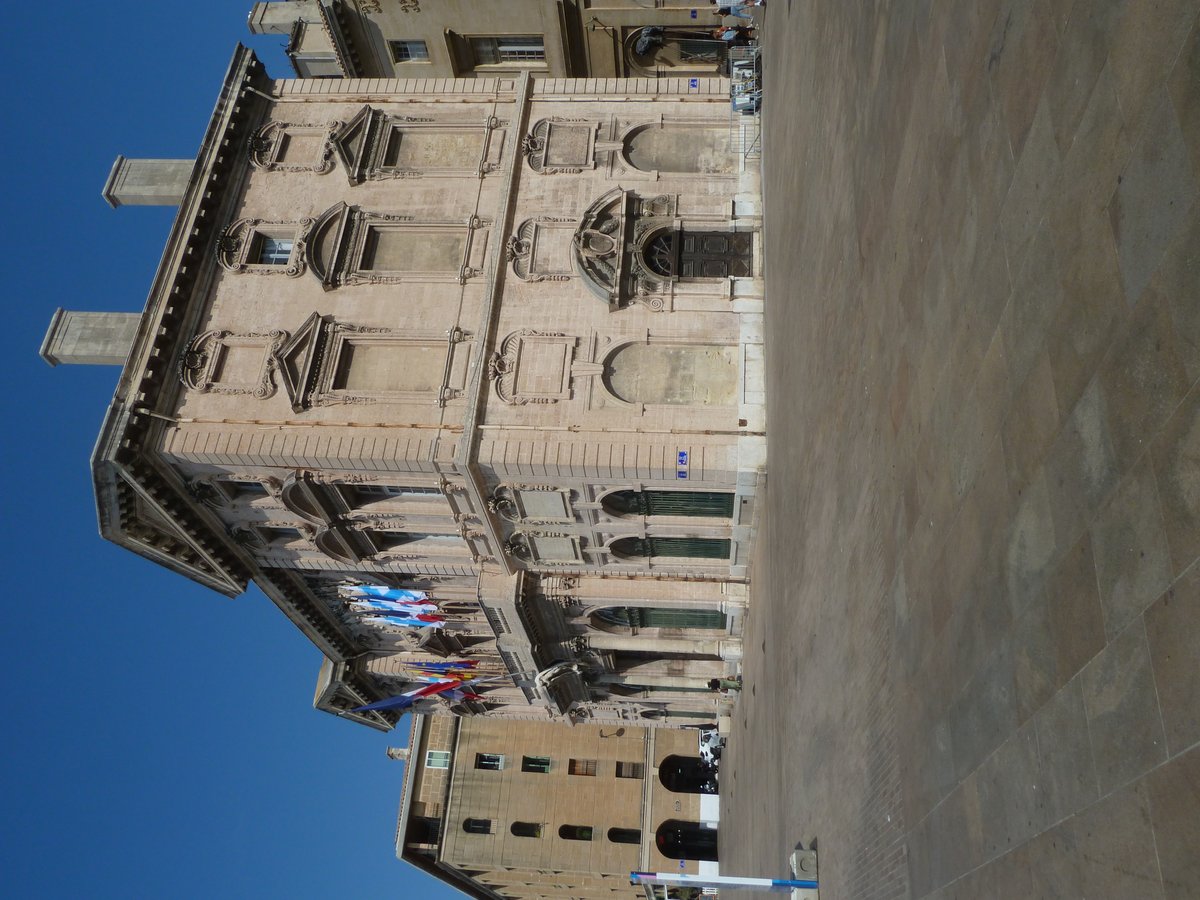
Quai du Port Visiting Hours, Tickets, and Travel Tips
Date: 19/07/2024
Introduction
Quai du Port, located in the heart of Marseille, France, is a vibrant and historically rich waterfront area that has played an essential role in the city’s development over the centuries. The port’s history dates back to ancient times when Marseille, originally known as Massalia, was founded around 600 BCE by Greek settlers from Phocaea. This strategic location made the port a crucial hub for trade and commerce in the Mediterranean region (Marseille History). From its early beginnings, through the Roman era and medieval period, to the Renaissance and subsequent centuries, the port has evolved significantly, witnessing the growth of Marseille as a major trading hub (Roman Marseille, Medieval Marseille).
The Quai du Port has not only been a focal point for economic activities but also a cultural epicenter, reflecting the diverse influences that have shaped Marseille over the millennia. Its bustling atmosphere, lined with cafes, restaurants, and shops, offers a unique glimpse into the vibrant local culture. The port area is also a venue for numerous cultural events and festivals, further cementing its place as a social and cultural landmark in Marseille (Marseille Port History). This comprehensive guide will explore the rich history of Quai du Port, provide essential visitor information, highlight nearby attractions, and offer tips to ensure a memorable visit.
Table of Contents
- Introduction
- Early Beginnings
- Visiting Quai du Port
- Nearby Attractions
- Special Events and Guided Tours
- Photographic Spots
- FAQ
- Conclusion
Early Beginnings
Roman Era
During the Roman era, Marseille continued to thrive as a significant port city. The Romans recognized the importance of the port and invested in its infrastructure, enhancing its capacity to handle larger ships and more extensive trade networks. The port became a vital link in the Roman trade routes, connecting the city to other parts of the Roman Empire. Archaeological evidence, including remnants of Roman warehouses and docks, attests to the port’s significance during this period (Roman Marseille).
Medieval Period
In the medieval period, the Quai du Port underwent several transformations. The port’s strategic importance continued to grow, and it became a focal point for maritime trade in the Mediterranean. The city of Marseille was fortified, and the port was equipped with defensive structures to protect against pirate attacks and other threats. The medieval port saw the arrival of goods from the Middle East, North Africa, and Europe, making it a melting pot of cultures and commerce (Medieval Marseille).
Renaissance and Expansion
The Renaissance period marked a significant expansion of the Quai du Port. The port’s infrastructure was modernized to accommodate the increasing volume of trade. New docks, warehouses, and shipyards were constructed, and the port became a bustling center of activity. The expansion of the port was driven by the growth of Marseille as a major trading hub, with goods such as spices, textiles, and precious metals flowing through its docks. The port’s development during this period laid the foundation for its future growth and significance (Renaissance Marseille).
17th and 18th Centuries
In the 17th and 18th centuries, the Quai du Port continued to play a crucial role in Marseille’s economic and social life. The port was further expanded and modernized to handle the increasing volume of maritime traffic. The construction of new quays, warehouses, and administrative buildings reflected the port’s growing importance. During this period, Marseille became one of the leading ports in Europe, with a thriving maritime trade that connected it to the Americas, Africa, and Asia (Marseille Port History).
Industrial Revolution
The Industrial Revolution brought significant changes to the Quai du Port. The advent of steamships and the expansion of global trade networks necessitated further modernization of the port’s infrastructure. New docks and facilities were built to accommodate larger vessels and increased cargo volumes. The port’s role as a gateway for industrial goods and raw materials became more pronounced, contributing to Marseille’s growth as an industrial and commercial center (Industrial Marseille).
20th Century and World Wars
The 20th century was a tumultuous period for the Quai du Port, marked by the impact of two World Wars. During World War I, the port played a crucial role in the transportation of troops and supplies. However, it also suffered damage from military actions. The interwar period saw efforts to rebuild and modernize the port, but World War II brought further destruction. The port was heavily bombed, and significant portions of its infrastructure were damaged or destroyed (WWII Marseille).
Post-War Reconstruction and Modern Era
After World War II, the Quai du Port underwent extensive reconstruction. The rebuilding efforts focused on modernizing the port’s facilities and infrastructure to meet the demands of the post-war economy. The port was equipped with new docks, warehouses, and transportation links, making it one of the most advanced ports in the Mediterranean. The modernization efforts paid off, and the port regained its status as a major hub for maritime trade and commerce (Post-War Marseille).
Visiting Quai du Port
Visiting Hours
The Quai du Port is accessible to visitors year-round. However, specific attractions within the port area, such as museums and historical sites, may have varying visiting hours. It is advisable to check the official websites or contact the venues directly for the most up-to-date information.
Tickets
While the port area itself is free to explore, certain attractions, museums, and guided tours may require tickets. Visitors can purchase tickets online or at the respective venues. Discounts may be available for groups, students, and seniors.
Travel Tips
- Getting There: The Quai du Port is easily accessible by public transportation, including buses and trams. There are also several parking facilities nearby for those traveling by car.
- Best Time to Visit: The port area can be particularly crowded during peak tourist seasons. For a more relaxed experience, consider visiting during the early morning or late afternoon.
- Weather: Marseille enjoys a Mediterranean climate, so be sure to check the weather forecast and dress accordingly.
Nearby Attractions
- Vieux-Port (Old Port): A historic and bustling area with shops, restaurants, and cafes.
- MuCEM (Museum of European and Mediterranean Civilisations): Located nearby, this museum offers a deep dive into the region’s cultural history (MuCEM).
- Basilique Notre-Dame de la Garde: A stunning basilica that offers panoramic views of the city and the port.
Special Events and Guided Tours
The Quai du Port hosts various special events throughout the year, including maritime festivals, cultural exhibitions, and historical reenactments. Guided tours are available for those interested in learning more about the port’s rich history and significance. Check the official Marseille tourism website for upcoming events and tour schedules.
Photographic Spots
The port offers numerous picturesque spots perfect for photography. Some popular locations include the Vieux-Port, the view from Fort Saint-Nicolas, and the bustling fish market.
FAQ
- What are the visiting hours for Quai du Port? The port area is accessible year-round, but specific attractions may have varying hours. Check individual venues for details.
- How do I get tickets for Quai du Port attractions? Tickets can be purchased online or at the venues. Discounts may be available for groups, students, and seniors.
- Is the Quai du Port accessible by public transportation? Yes, it is easily accessible by buses and trams, with several parking facilities nearby for those traveling by car.
Conclusion
The history of the Quai du Port is a testament to Marseille’s enduring significance as a maritime hub. From its ancient beginnings to its modern-day role, the port has been a focal point of trade, culture, and economic activity. Its evolution over the centuries reflects the broader historical trends and developments that have shaped Marseille and the Mediterranean region. The Quai du Port remains a symbol of the city’s resilience, adaptability, and enduring connection to the sea. Plan your visit today to explore this historic landmark and immerse yourself in the rich heritage of Marseille.
Call to Action
For more information on visiting Quai du Port and other historical sites in Marseille, download our mobile app or follow us on social media for the latest updates and travel tips.
References
- Marseille History. Marseille Tourism. https://www.marseille-tourisme.com/en/discover-marseille/history/
- Roman Marseille. Ancient History Encyclopedia. https://www.ancient.eu/Marseille/
- Medieval Marseille. Britannica. https://www.britannica.com/place/Marseille/History
- Marseille Port History. Port of Marseille Fos. https://www.port-marseille.com/en/history/
- MuCEM. Museum of European and Mediterranean Civilisations. https://www.mucem.org/en
- Calanques National Park. https://www.calanques-parcnational.fr/en

